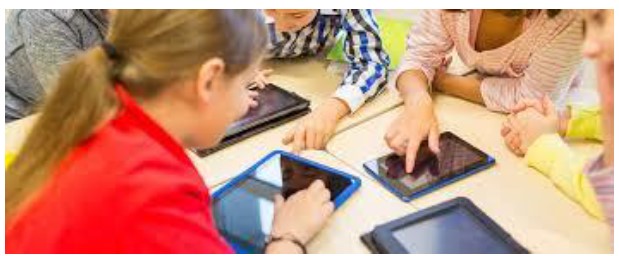23
Technology has greatly impacted the everyday learning experience. It has greatly expanded access to education. In medieval times, for example, only the elite had access to educational opportunities and books. Individuals had to travel to centers of learning to receive an education. Today, everything is available online and on-demand. Technology has also enabled teaching to occur in a variety of formats, both formal and informal, including MOOCs, podcasts, and standard online degree programs. Regardless of the specific learning method, opportunities to collaborate and hear from professionals and thought leaders directly have greatly expanded with access to technologies. Below is an outline of the benefits of emerging educational technologies:
1. Improves engagement
When technology is integrated into lessons, students are expected to be more interested in the subjects they are studying. Technology provides different opportunities to make learning more fun and enjoyable as the same things are taught in new ways e.g. delivering teaching through gamification, taking students on virtual field trips, and using other online learning resources. Furthermore, technology can encourage more active participation in the learning process which can be hard to achieve through a traditional lecture environment.

2. Improves knowledge retention
Students who are engaged and interested in things they are studying, are expected to have better knowledge retention. As mentioned before, technology can help to encourage active participation in the classroom which is a very important factor for increased knowledge retention. Different forms of technology are experimented with to learn what works best for students in retaining knowledge.
3. Encourages individual learning
No one learns in the same way because of different learning styles and abilities. Technology provides great opportunities for making learning more effective for everyone. For example, students can learn at their speed, review difficult concepts, or skip ahead if they need to. Additionally, technology can provide more opportunities for struggling or disabled students. Access to the Internet gives students access to a broad range of resources to research in different ways, which in turn increases engagement.

4. Encourages collaboration
Students can practice collaboration skills by getting involved in different online activities. For instance, working on different projects by collaborating with others on forums or by sharing documents in their virtual learning environments. Technology can encourage collaboration with students in the same classroom, same school, and even with other classrooms around the world.

5. Students can learn useful life skills through technology
By using technology in the classroom, both teachers and students can develop skills essential for the 21st century. Students can gain the skills they will need to be successful in the future. Modern learning is about collaborating with others, solving complex problems, critical thinking, developing different forms of communication and leadership skills, and improving motivation and productivity. Furthermore, technology can help develop many practical skills, including creating presentations, learning to differentiate reliable from unreliable sources on the Internet, maintaining proper online etiquette, and writing emails. These are very important skills that can be developed in the classroom.
6. Benefits for teachers
With countless online resources, technology can help improve teaching. Teachers can use different apps or trusted online resources to enhance the traditional ways of teaching and to keep students more engaged. Virtual lesson plans, grading software, and online assessments can help teachers save a lot of time that can be used for working with students who are struggling. Furthermore, having virtual learning environments in schools enhances collaboration and knowledge sharing between teachers. Highlighting the benefits of emerging technologies encourages schools to think differently about technology and its role in teaching. Students are also challenged to investigate new ways of learning. Besides, hands-on time allows faculty and students to explore and use new technology as they think about ways it can help them solve instructional problems

